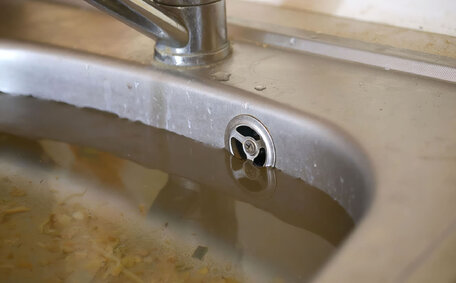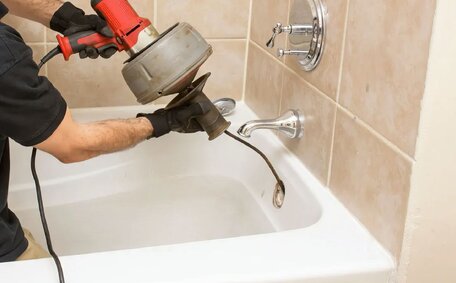What is an Anode Rod and Why is it Important?
Though 'sacrificial anode rod’ may seem technical, it’s a vital part of your water heater tank. These devices are installed within your water heater tank to combat corrosion. An anode rod protects the water tank by attracting corrosive substances, thereby preventing rust and corrosion. The anode rod gradually corrodes over time, sacrificing itself to shield the water heater tank from damage.
For optimal protection, anode rods are typically made from materials such as magnesium, aluminium, or zinc.
Regular replacement of the anode rod can prolong the lifespan of your water heater by averting early corrosion and rust within the tank. By inspecting and replacing your water heater’s anode rod every 2-4 years, you can save money through enhanced heater longevity.
The anode rod is a key component in ensuring consistent hot water availability in your home.
Understanding the function and significance of an anode rod in your water heater is eye-opening; This knowledge enables proactive maintenance, ensuring you get the maximum benefit from your hot water system.
How Anode Rods Prevent Tank Corrosion
Anode rods counter rust corrosion in your hot water heater tank using a method known as cathodic protection. Sacrificial anodes form an electrochemical cell inside the tank, with the anode rod as the 'anode’ and the steel tank as the 'cathode’.
The heater anode, with its steel core, attracts corrosive elements in the water, causing it to slowly corrode instead of the tank. It essentially “sacrifices” itself by corroding over time. The ions emitted from the anode rod react with minerals in the water, forming a protective layer inside the tank.
Because the anode rod corrodes more readily than the tank itself, it shields your hot water heater from damage, ensuring water quality and appliance integrity. Replacing your water heater’s anode rod every 3-5 years, within your warranty guidelines, is essential to maximise the appliance’s longevity, especially after testing your water quality.
Knowing how frequently to check and replace your anode rod is crucial for maintaining the longevity of your water heater. A worn out rod can accelerate anode rod depletion dramatically, causing leaks or even complete tank failure.
Types of Anode Rod Materials
There are three main types of anode rod materials that protect the inside water heater from corrosion:
- Magnesium: While magnesium anode rods offer reliable corrosion protection at a lower cost, they have a shorter lifespan and are best suited for areas with soft water.
- Aluminium: Aluminium anode rods are lightweight and affordable, They offer good longevity in hard water environments, which benefits even tankless water systems.
- Aluminium/zinc alloy: Aluminium/zinc alloy anode rods present a balanced option with improved corrosion protection, yielding a longer lifespan compared to pure aluminium. Alloy rods work in nearly all water conditions.
Consider your water quality and choose an anode rod type that is compatible with it when replacing. Magnesium is best for soft water, while aluminium or aluminium/zinc alloy works for hard water areas. Your plumber can advise about your specific water conditions and if an anode rod is good for them in your home.
No matter the material, routinely replacing the anode rod every 3-5 years ensures continuous protection against corrosion, prolonging your water heater’s service life.
Signs Your Anode Rod Needs Replacement
There are a few signs that indicate your water heater’s anode rod needs replacing:
- If your water heater emits loud noises, or if the hot water is discoloured or has an odour like rotten eggs, this could signal excess sulphur from a corroding, deteriorated anode rod. This is a common early sign.
- Decreased water temperature - If hot water availability lessens or isn’t as hot, the anode rod may not be effectively protecting the tank.
- Visible holes or corrosion - You may be able to see holes or excessive corrosion on the anode rod itself when you take off the inspection cover.
- Older system - While timeframes vary, most manufacturers recommend replacing the anode rod every 2-4 years as preventative maintenance.
Water softeners can heighten corrosion rates, reducing the lifespan of even high-quality anode rods in your water heater. More frequent checks may be needed if you have one installed.
Anode rod replacement provides ongoing protection against corrosion and enhances the lifespan of your water heater tank. Catching problems early on can avoid more expensive heater repair costs down the track.
If you detect any of these cautionary indicators, Our licensed plumbers are ready to assist with the inspection or replacement of your water heater’s anode rod.
Locating the Anode Rod in Your Water Heater
Finding the anode rod in your water heater is usually straightforward. Here are the main steps:
- As detailed in the informative plumbing blog we compose, we advise that you turn off power to the water heater by flipping the breaker switch or turning off the gas supply valve.
- Get your system ready by making sure to turn off water to your cold water supply valve, effectively halting the flow of water into your tank.
- Open a hot water faucet inside the house which might also release any trapped gases and drain some water out of the electric water heater tank through the drain valve at the bottom.
- On an electric heater, make your way to the top tank to check for a hex head plug, often labelled "anode". On a gas water heater, there may be a hex plug under a plastic cover instead.
- Employ an adjustable wrench or socket wrench to locate anode rod and unscrew the hex plug where you replace anode rod.
- Pull out the anode rod with pliers to inspect its condition and determine if the rod get a replacement is required. Look for significant corrosion or holes as signs it should be replaced.
- Lubricate threads of new anode rod with teflon tape. Screw the anode rod back in place, close drain valve, restore power and water supply.
Follow basic safety protocols, and locating the hex plug will simplify the DIY inspection or replacement of your water heater’s anode rod. If in doubt, call upon our team of expert plumbers for assistance.
Step-by-Step Guide to Replacing an Anode Rod
Follow these key steps to safely replace your water heater’s anode rod:
- Turn off power and water supply - Flip breaker switch, close gas valve, and turn off cold inlet valve.
- Drain water out through the spigot or drain valve at the bottom tank of your heater.
- Remove plastic cover if present to locate hex plug. Use socket wrench to unscrew plug counterclockwise.
- Clamp vice grip pliers firmly to the anode rod and pull directly upward to remove the old anode rod.
- Inspect condition; corroded rod confirms replacement needed.
- Apply teflon tape on threads of new anode rod.
- Screw new anode rod into port by hand until tight.
- Restore water supply and power to water heater.
Employ a breaker bar for added leverage and to ensure safe lifting when removing or inserting the rod, reducing the risk of back injury. Allow hot water inside tank to fully cool before beginning work. Replacing anode rod takes 1-2 hours; avoid leaks by following instructions carefully or call a licenced plumber for assistance.
Best Practices for Anode Rod Maintenance
To maximise your water heater’s lifespan, follow these anode rod maintenance best practises:
- Inspect the anode rod’s condition every 2 years by unscrewing the hex plug for a visual examination.
- Replace the anode rod as needed or about every 4-5 years as routine preventative maintenance.
- Use pipe thread sealant on the threads when installing a new rod to prevent leaks.
- Consider the water type in your area when selecting a replacement rod material.
- Schedule annual water heater inspections to check the anode rod and catch any issues early.
- Keep records of when the anode rod was last replaced to stay on top of maintenance needs.
Well-maintained anode rods are critical for protecting water heaters from internal corrosion. Establishing proactive care routines prolongs the system’s lifespan, avoiding costly repairs or replacement.
Extending the Lifespan of Your Water Heater
In addition to anode rod maintenance, you can employ several strategies to extend your water heater’s life:
- Insulate the water pipes and tank to minimize standby heat loss and maintain temperature consistency. This maintains temperature and avoids energy waste.
- Keep the thermostat set between 50-60 degrees Celsius to avoid mineral buildup and accelerated corrosion.
- Annually, flush sediment from the tank’s bottom by connecting a garden hose to the drain valve and opening the pressure relief valve.
- Limit the use of water softeners to prevent increasing water corrosiveness and excessive anode rod wear.
Annual checks by a licensed plumber can educate you on components such as the anode rod, temperature/pressure valve, and electric or gas components.
A proactive approach to water heater maintenance can save money by preventing early leaks or failures. For expert plumbing services, engage with Hornsby Plumbing at 1300 349 338 to service your system or arrange an inspection.






